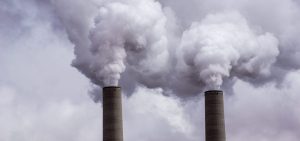News
Ohio environmentalists note climate change authority now ‘enshrined’ in federal law
By: Andy Chow | Statehouse News Bureau
Posted on:
COLUMBUS, Ohio (Statehouse News Bureau) — Environmental groups in Ohio say new language in federal law will solidify the scope and authority of the U.S. Environmental Protection Agency to regulate greenhouse gases under the Clean Air Act.

Chris Tavenor, Ohio Environmental Council staff attorney, said the U.S. EPA has always had the responsibility to regulate greenhouse gases, but the new language “enshrines” that authority.
“If there were any future legal challenges to the U.S. EPA’s authority to regulate greenhouse gas emissions, those challenges will be a lot more difficult having this language so clearly in the act,” said Tavenor.
On June 30, the U.S. Supreme Court ruled in a 6-3 decision that the U.S. EPA did not have the authority under the Clean Air Act to issue regulations for each state to cut down on power plant emissions. The EPA was carrying out this initiative through the Clean Power Plan, which was created by the Obama administration.
Opponents said the EPA did not have authority to implement the Clean Power Plan without more specific guidance from Congress.
Rep. Bill Seitz (R-Cincinnati) said, when the U.S. Supreme Court ruling was announced, that the court is simply saying that “Congress needs to provide a clearer direction to the administrative agency before the administrative agency can come up with such a sweeping rule.”
Tavenor said the new language in the Inflation Reduction Act does not counteract the U.S. Supreme Court’s ruling, but it can protect the U.S. EPA’s authority against future legal challenges.
As for the intent of the now-repealed Clean Power Plan, Tavenor said the Inflation Reduction Act’s investments in renewable energy and carbon-cutting projects get “at the heart” of what the Clean Power Plan was trying to accomplish.
“So it’s creating some financial mechanisms to transition the country away from fossil fuel power plants without using the approach that was in the Clean Power Plan,” said Tavenor.
The federal investments include $9 billion in consumer home energy rebate programs, $10 billion in tax credits for investments in clean technology manufacturing such as facilities that build electric vehicles, and $30 billion in tax credits that incentivize U.S. manufacturing of products like solar panels and wind turbines.
9(MDU1ODUxOTA3MDE2MDQwNjY2NjEyM2Q3ZA000))

